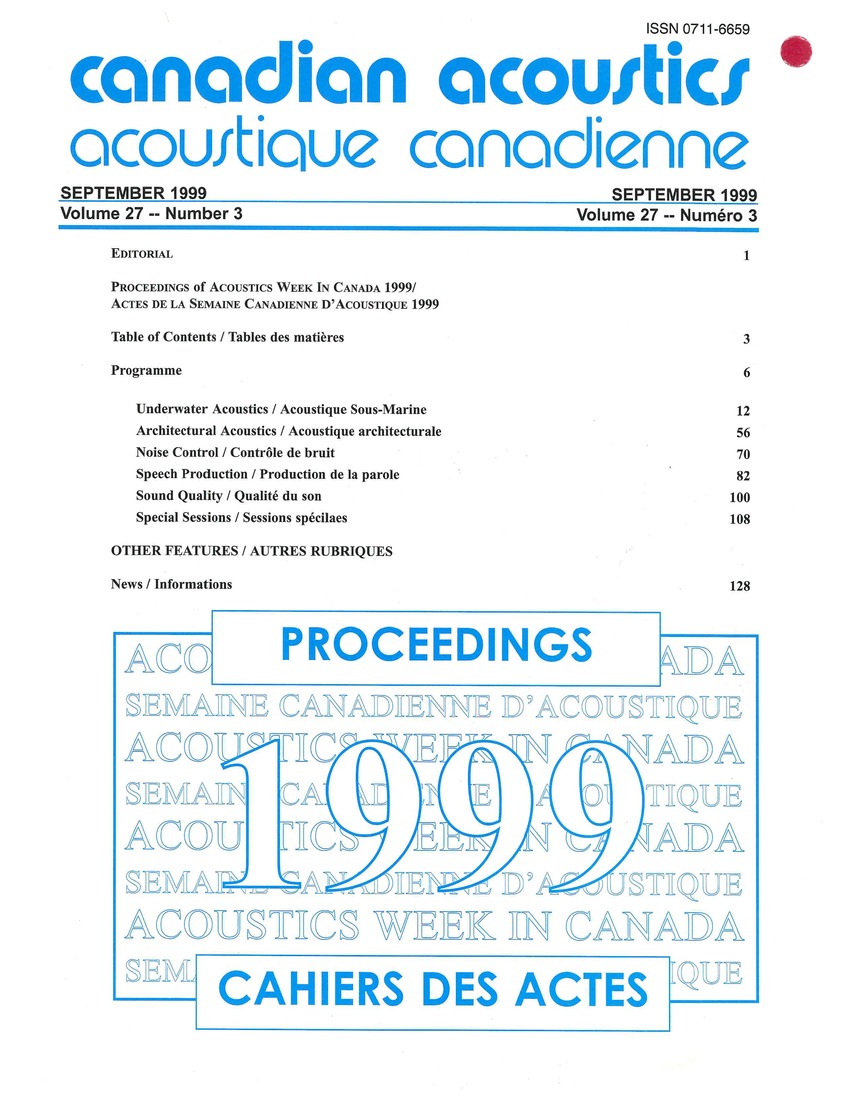Simulation of underwater ambient noise time series
Abstract
In modern naval surveillance, ships and submarines may be tracked via their underwater acoustic signatures. In both active and passive sonar, arrays of hydrophones are used to enhance the signal-to-noise ratio and to obtain directional information. Various techniques exist to process the acoustical signals from arrays in order to maximize the sensitivity in a desired direction while minimizing the contribution of ambient noise. Two array processing techniques currently being explored at Defense Research Establishment Atlantic (DREA) are superdirective and intensity processing. In order to test these concepts for underwater applications, it is necessary to simulate the response of an array to an acoustic signal in the presence of ambient noise. The results obtained from the signal processing algorithms will be affected by the spatial and temporal characteristics of the noise field. Since real acoustic data may be unavailable or the statistics may not be fully known, simulated noise can be used to probe array performance as a function of quantifiable noise characteristics. In this paper we present three different approaches for generating synthetic ambient noise time series data which possess controlled statistical characteristics. The noise statistics which are specified are the probability density function, power spectrum, and the complex cross correlation function between pairs of noise time series. The simulated noise time series represent different types of underwater noise fields.Additional Files
Published
How to Cite
Issue
Section
License
Author Licensing Addendum
This Licensing Addendum ("Addendum") is entered into between the undersigned Author(s) and Canadian Acoustics journal published by the Canadian Acoustical Association (hereinafter referred to as the "Publisher"). The Author(s) and the Publisher agree as follows:
-
Retained Rights: The Author(s) retain(s) the following rights:
- The right to reproduce, distribute, and publicly display the Work on the Author's personal website or the website of the Author's institution.
- The right to use the Work in the Author's teaching activities and presentations.
- The right to include the Work in a compilation for the Author's personal use, not for sale.
-
Grant of License: The Author(s) grant(s) to the Publisher a worldwide exclusive license to publish, reproduce, distribute, and display the Work in Canadian Acoustics and any other formats and media deemed appropriate by the Publisher.
-
Attribution: The Publisher agrees to include proper attribution to the Author(s) in all publications and reproductions of the Work.
-
No Conflict: This Addendum is intended to be in harmony with, and not in conflict with, the terms and conditions of the original agreement entered into between the Author(s) and the Publisher.
-
Copyright Clause: Copyright on articles is held by the Author(s). The corresponding Author has the right to grant on behalf of all Authors and does grant on behalf of all Authors, a worldwide exclusive license to the Publisher and its licensees in perpetuity, in all forms, formats, and media (whether known now or created in the future), including but not limited to the rights to publish, reproduce, distribute, display, store, translate, create adaptations, reprints, include within collections, and create summaries, extracts, and/or abstracts of the Contribution.


